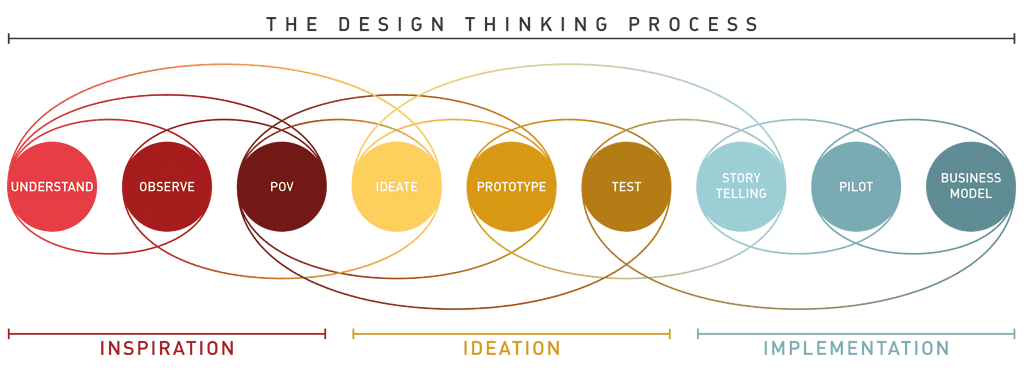your journey
Design Thinking
What is Design Thinking?
Design thinking can be described as a discipline that uses the designer’s sensibility and methods to match people’s needs with what is technologically feasible and what a viable business strategy can convert into customer value and market opportunity.
It is a method to solve challenges and to generate innovative solutions, based on a user-centered approach with a multi-disciplinary team.

How Do You Use Design Thinking?
Design Thinking Process:
- Understand - First, understand the challenge, business problem, and/or regulation
- Observe - Observe and gather insights about a user’s needs. After all, it’s the people in the business who have to use the service every day
- POV - Create a theory, about the user’s needs, pain points for ways to improve
- Ideate - Generate ideas for possible solutions to the defined challenge
- Prototype - Create a possible solution to test your theory
- Test - Gather feedback from users and stakeholders about concept and prototype. Iterate theory, ideate, prototype, and test as needed. Create a company culture to test and learn from your problem
- Storytelling - Tell the story to users and stakeholders to gain buy-in
- Pilot - Pilot your idea within your organisation
- Business Model - Incorporate insights discovered in your design thinking process to your business model
From sustained use of design thinking, it’ll become your competitive advantage.
Value in Design Thinking
The benefits and value in implementing design thinking is both tangible and sustainable, resulting in a significant ROI. It builds a culture of integration and interaction between silos, using “and” rather than “versus”.
“Innovation doesn’t require large volumes of information, but it requires people who know your business and customer … Design thinking is a lifestyle commitment. It doesn’t happen overnight, it takes years. And it comes from top down and bottom up.”
Share this:

Neil ran his first SAP transformation programme in his early twenties. He spent the next 21 years working both client side and for various consultancies running numerous SAP programmes. After successfully completing over 15 full lifecycles he took a senior leadership/board position and his work moved onto creating the same success for others.